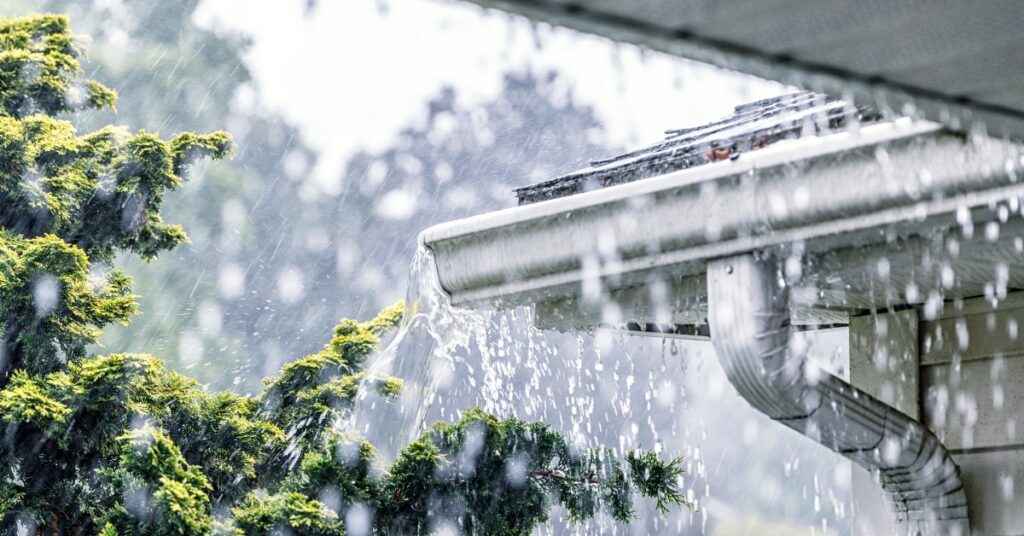How Leaking and Sagging Gutters Can Damage Your Home

Table of Contents
Gutters may not be the first thing homeowners think about when it comes to protecting their property, but they play a critical role in keeping your home dry and structurally sound. In areas like Metro Atlanta and North Florida, where heavy rainfall and humid weather are common, gutters work overtime to direct water away from your roofline and foundation. It’s when they begin to leak or sag that the entire system stops working as it should – and the consequences can be costly.
Leaking gutters or sagging gutters create an inconvenience that allows water to pool in places where it doesn’t belong. Over time, that water can erode the soil around your foundation, cause basement flooding, and even lead to cracks in your home’s structure. Understanding why gutters matter, how to spot signs of damage, and when to replace them can save you thousands in future repairs while giving you peace of mind during the next storm.
The Role of Gutters in Protecting Your Home
Gutters are designed to channel rainwater off your roof and safely away from your home. Without them, water would pour directly down the sides of your house, soaking siding, windows, and landscaping, all while putting tremendous stress on your foundation. A properly functioning gutter system prevents these issues by directing water away from your foundation to reduce soil erosion and keep your foundation dry.
Here’s what a properly functioning gutter system does for your home:
Directs water away from the foundation – Prevents cracks, settling, and long-term structural issues.
Reduces soil erosion – Keeps the ground around your home stable after heavy rainfall.
Keeps foundation and crawlspaces dry – Stops water from pooling against lower levels of your home.
Protects siding, soffits, fascia, and windows – Prevents water damage and premature aging of exterior features.
How Leaking and Sagging Gutters Compromise Protection
When gutters begin to leak or sag, they lose their ability to guide water away from your home effectively. A small drip at first may not seem like much, but over weeks and months, that steady water flow erodes the soil around your foundation. Sagging gutters, on the other hand, create low spots where water collects and overflows rather than moving through the downspouts.
The result is water pooling in areas that place strain on your home’s structure. Soil washes away, foundations shift or crack, and basements become more susceptible to flooding. What begins as a minor maintenance issue can quickly grow into a major structural concern if left unchecked.
Signs Your Gutters Need to Be Replaced
Are your gutters still protecting your home the way they should? Here are some of the most common warning signs that it’s time to consider gutter replacement:
Visible Leaks or Cracks
Even small leaks allow water to escape before it reaches the downspout. Over time, these leaks carve channels in the ground around your home, saturate soil near your foundation, and create long-term damage.
Gutters Pulling Away or Sagging
When gutters pull away from the fascia or sag under the weight of water and debris, gaps form where water can flow straight down your walls. This not only damages siding and fascia boards but also allows water to seep directly into the ground around your foundation.
Pooling Water Around the Home
If you notice standing water, soil erosion, or dirt channels forming near your foundation after a rainstorm, it’s a strong sign your gutters aren’t doing their job. These water patterns reveal that runoff is too close to the home, increasing the risk of basement flooding and foundation cracks.
Rust, Corrosion, or Peeling Paint
Metal gutters with visible rust or peeling paint indicate that water has been sitting inside instead of draining properly. These signs often signal that leaks are forming, which can worsen quickly in areas with frequent rainfall.
Rotting Fascia or Water-Damaged Walls
If the wood behind your gutters shows signs of rot or if water stains appear on exterior walls, it’s likely because your gutters are no longer channeling water where they should. This damage compounds over time and can be far more expensive to repair than replacing the gutters themselves.
How Replacing Your Damaged Gutters Can Protect Your Home
The good news is that replacing leaking or sagging gutters restores your home’s protection almost immediately. Professionally installed gutters give you peace of mind, knowing that rainwater is being directed away from your foundation and into a safe drainage path. Having new gutters installed by professionals can offer many benefits for your home.
New gutters provide:
Foundation Protection – By properly channeling water, new gutters reduce soil erosion and keep your foundation stable.
Preserved Landscaping – Controlled water flow prevents standing water and damage to gardens, grass, and walkways.
Protected Exterior Surfaces – Siding, windows, and doors are shielded from water damage.
Lower Long-Term Costs – Replacing gutters now is far less expensive than repairing foundation cracks, water-damaged basements, or rotted wood later.
- Increased Home Value – Buyers appreciate a functional gutter system. Bonus points if it’s been recently installed.
Schedule Your Gutter Replacement Consultation Today
If you’ve noticed leaks, sagging, or other signs of gutter failure, don’t wait for water to damage your home’s foundation. Addressing gutter issues quickly saves you from costly repairs and keeps your home structurally sound through the heavy rains we experience in Metro Atlanta and North Florida.
Why Choose Wallcraft Exterior Solutions?
Wallcraft Exterior Solutions offers seamless installation of gutter systems designed to withstand the Southeast’s humid climate and frequent storms. Our team brings over 30 years of combined experience and a commitment to craftsmanship that ensures every gutter system we install works flawlessly. We offer complimentary gutter replacement consultations and precise, detailed estimates so you know exactly what to expect before the work begins.
